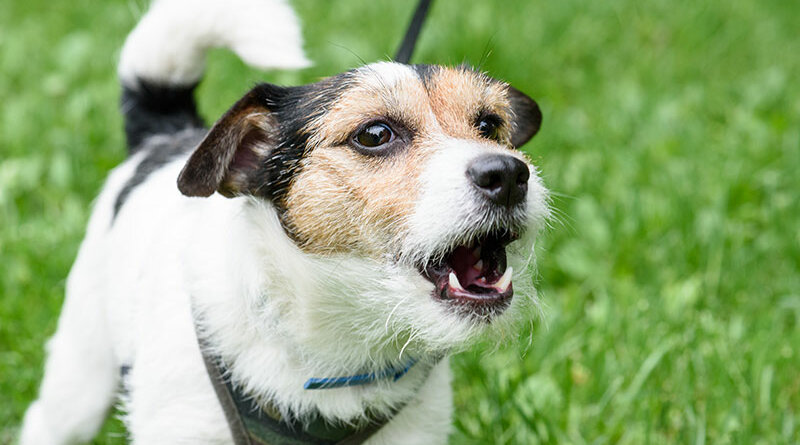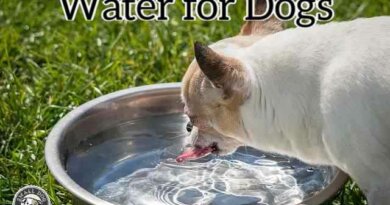On-Leash Reactivity—Give Me Space! | The Bark
It’s another exciting day in the life of a dog trainer. I come bearing my notes and a treat pouch stuffed with teeny-tiny pieces of cheese, ready to tackle my new client’s reactivity concerns. (For those looking for a description of reactivity, it is barking, lunging and/or growling in response to the presence of a particular stimulus.)
The stars of tonight’s training session are Lisa and her handsome dog, Rocket, a scrappy terrier mix, no more than 15 pounds. We’re on the streets of Washington, D.C., in a heavily populated area. Since Lisa has just returned from work, we’re taking Rocket outside for bladder relief. We begin discussing the pup’s reactivity as Rocket happily struts ahead of us on-leash. About two blocks into this evening stroll, I see that Rocket’s body has tensed, his ears are standing up and he’s staring straight ahead. Coming our direction is a hound roughly four times his size.
The hound is a young dog with a zest for life that many of us would (and should) envy. He is clearly eager to investigate Rocket, and his person appears just as eager to allow him to. The problem in this scenario is that Rocket has no, zilch, notta single interest in meeting Big Hound. In fact, using my canine-body-language-deciphering skills, I’d say that Rocket fears what this dog, with his size and large jaws filled with sharp teeth, is capable of doing to his petite self.
With about four car lengths between the hound and Rocket, Rocket is doing his best to send his message. He is pulling on his leash as forcefully as he can and barking ferociously. Putting his behavior into words, I imagine him saying, “Uh-uh! You need to stay away from me! Keep your distance! I said, get the hell away!”
GET THE BARK IN YOUR INBOX!
Sign up for our newsletter and stay in the know.
At this point, Lisa has gone into full embarrassment mode, and I quickly take the leash from her. I am attempting to cheerfully move the two of us away from the oncoming hound, but unfortunately, this encounter is moving quickly and there’s not much I can do. The hound manages to make contact with Rocket, ignoring the very direct message Rocket has sent, and performs a quick and thorough tail-to-nose inspection. Clearly uncomfortable, little Rocket is trying to move away from him while tucking his tail and barking.
Meanwhile, the zestful hound’s person, oblivious to poor Rocket’s plight, is making small talk with Lisa. Lisa, in turn, apologizes profusely for Rocket’s behavior. Once I’m able to separate the dogs—although the hound’s still too close for Rocket’s comfort—I do my best to distract him (cheese pieces to the rescue!), waiting for the Lisa-and-Hound-Mom conversation to end. I haven’t moved even farther away because I don’t want to disappear with this newly met client’s dog.
As the conversation wraps up, Lisa turns to me and explains that this display of Rocket’s behavior is exactly what she wants to stop, and she has no idea why I am talking soothingly to Rocket when she’d rather verbally let him have it! I get the sense that she might be just as angry about my response to Rocket as she about Rocket’s response to the excited hound.
A Common Scenario
This scene is very common, and I suspect, familiar. Reactivity is a pervasive canine behavior of concern, and Lisa’s emotions are understandable. However, because I have an education in dog behavior, learning and training, and because I have years of experience working with reactive dogs, I don’t blame Rocket one little bit. While the young hound may not have understood Rocket’s message, I did.
Rocket did his very best to prevent a situation that made him feel powerless, uncertain and downright fearful. Yet, Rocket’s worst (well, worst may have involved those fine teeth) fears were brought to life right before our eyes. The little dog was on a leash, trapped and unable to stop a much larger dog from doing exactly as he pleased. Personally, I can’t imagine how scared I would be in a similar situation with a human who was both stronger and larger than me.
It’s important to understand that Rocket doesn’t seek opportunities to embarrass Lisa. He is using the language he speaks to communicate to other dogs that he does not want to mingle. Again, this could be because he doesn’t like the sensation of being trapped. He may be motivated by an event in his past, perhaps involving a fight. He may simply prefer to have space between him and other dogs. (I’m sure many of us can relate—do you love inspecting your co-worker’s facial pores as he invades your personal space every time you interact?) What Rocket’s behavior should communicate to other dogs is not always respected by other dogs, or other humans, for that matter.
How to Respond
So, what is my approach? How do I help the Rockets of this world learn to deal with things that scare them? I decipher their loudly shouted messages and share them with their people. I build each dog’s trust in his people. I create a bridge of communication between human and dog. All of these approaches allow the Rockets to relax a little more with every walk and, consequently, allow their people to relax, too. No need for embarrassment or overwhelming fear. We’re a team and we can do this.
Let’s break down this approach. How do we get the messages our canine friends are sharing? We need to better understand their body language and their “spoken” language, as well. This can be a tough one, but many great resources on canine language exist: books, magazines, webinars, professional dog trainers. I’m partial, both from a scientific and ethical perspective, to positive reinforcement (the treat pouch probably tipped you off that I’m a PR trainer).
How do we build trust between dogs and their people? It starts by learning to recognize what a dog is saying, which makes it easier to respond appropriately. In reactivity, identifying fear and a dog’s inability to handle close proximity to another dog or human allows us to understand that putting distance between a dog and his feared stimuli provides reassurance. Visual barriers can also calm or soothe a fearful dog.
Next, and my favorite, how do we build a bridge of communication with a member of another species? One option is to create a shared language; to do this, we train. My training cue of choice for reactivity is a form of focus called “look” or “watch.” With proper education and practice, we can ask for focus from our dog as the two of us enter a questionable situation. Asking for focus helps prevent further reaction from the dog. If, thanks to shared communication and distraction techniques, the situation never becomes too frightening, there is no need for the Rocket of this scenario to send a loud, barking message.
Here’s the best part: at some point, we may not even need to ask for our dog’s focus! With practice, the dog may choose to handle the situation himself by looking at his human when he encounters a worrisome situation. Let me tell you, this is an exhilarating moment the first time it happens. Even though I’ve seen it hundreds of times, I still want to leap into the air with excitement.
As humans who have chosen to bring another species into our daily lives, we have an obligation to try to understand what our dogs are telling us. Likewise, we have an obligation to try to improve our relationship using this acquired knowledge.
There’s no need to feel embarrassed. Have a “chat” with your dog, and rediscover that walks with your best friend really are one of the best parts of your day.




